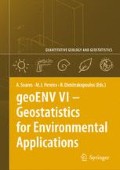Abstract
The main objective of this work is to evaluate the influence, bothphysical and socio-economical, of the most important large-scale phenomenon of the Northern Hemisphere, the North Atlantic Oscillation (hereafter NAO), on the climate of the western Iberian region. Using high and low NAO index composites, statistically significant anomaly fields of climate variables are then interpreted based on physical mechanisms associated with anomalous large-scale circulation.
The Iberian Peninsula precipitation and river flow regimes are characterized by large values of inter-annual variability, with large disparities between wet and dry years. This is a major problem for water resource management, in general, and for the production of hydroelectricity, in particular. We have assessed the impact of the NAO on Iberian winter precipitation and river flow regimes for the three main international Iberian river basins, namely the Duero (north), the Tagus (centre) and the Guadiana (south). Results show that the large inter-annual variability of these three river flows is mostly modulated by the NAO phenomenon. Throughout most of the 20th century, the January-to-March river flow is better correlated with the 1-month-lagged (December-to-February, DJF) NAO index than is the simultaneous (DJF) river flow. Correlation values for the period 1973–1998 are highly significant, –0.76 for Duero, –0.77 for Tagus and –0.79 for Guadiana, being consistently of higher magnitude than those obtained in previous decades.
The majority of landslide episodes in the area north of Lisbon are associated with rainfall events of short (less than 3 days) or long duration (more than 20 days). Results for the low NAO class are crucial because these months are more likely associated with long-lasting rainfall episodes responsible for large landslide events. This is confirmed by the application of a 3-month moving average to both the NAO index and the precipitation time series. This procedure allows the identification of virtually all months with landslide activity as being characterized by negative average values of the NAO index and high values of average precipitation (above 100 mm/month).
Access this chapter
Tax calculation will be finalised at checkout
Purchases are for personal use only
Preview
Unable to display preview. Download preview PDF.
References
Barnston AG, Livezey RE (1987) Classification, seasonality and persistence of low-frequency atmospheric circulation patterns. Mon Weather Rev 115:1083–1127
Cullen HM, deMenocal PB. (2000) North Atlantic influence on Tigris–Euphrates streamflow. Int J Climatol 20:853–863
Gámiz-Fortis S, Pozo-Vázquez D, Esteban-Parra MJ, Castro-Díez Y. (2002) Spectral characteristics and predictability of the NAO assessed through singular spectral analysis. J Geophys Res 107 (D23), 4685. Doi:10.1029/2001JD001436
Goodess CM, Jones PD (2002) Links between circulation and changes in the characteristics of Iberian rainfall. Int J Climatol 22:1593–1615
Gostelow P (1991) Rainfall and landslides. In : Almeida-Teixeira M et al (eds) Prevention and control of landslides and other mass movements. CEC, Bruxels, pp 139–161
Hurrell JW (1995) Decadal trends in the North Atlantic oscillation: regional temperatures and precipitation. Sci 269:676–679
Hurrell JW, van Loon H (1997) Decadal variations in climate associated with the North Atlantic Oscillation. Climatic Change 36:301–326
Jones PD, Johnson T, Wheeler D (1997) Extension to the North Atlantic Oscillation using instrumental pressure observations from Gibraltar and south-west Iceland. Int J Climatol 17:1433–1450 greenhouse gas. Clim Dyn 15:551–559
Jung T, Hilmer M (2001) On the link between the North Atlantic Oscillation and Arctic sea ice export through Fram Strait. J Clim 14:3932–3943
Kalnay E, Kanamitsu M, Kistler R, Colins W, Deaven D, Gandin L, Iredell M, Saha S, White G, Wollen J, Zhu Y, Leetmaa A, Reynolds R, Chelliah M, Ebisuzaki W, Higgins W, Janowiak J, Mo KC, Ropelewski C, Wang J, Jenne R, Joseph D (1996) The NCEP/NCAR 40-years reanalyses project. Bull Am Meteorol Soc 77:437–471
Lu J, Greatbatch RJ (2002) The changing relationship between the NAO and the northern hemisphere climate variability. Geophys Res Lett vol 29. (7) 10.1029/2001GLO14052
Osborn TJ, Briffa KR, Tett SFB, Jones PD, Trigo RM (1999) Evaluation of the North Atlantic Oscillation as simulated by a climate model. Clim Dyn 15:685–702
Rîmbu N, Boronean C, Carmen B, Mihai D (2002) Decadal variability of the Danube river flow in the lower basin and its relation with the North Atlantic Oscillation. Int J Climatol 22:1169–1179
Serreze MC, Carse F, Barry RG, Rogers JC (1997) Icelandic Low cyclone activity: climatological features, linkages with the NAO, and relationships with recent changes in the Northern Hemisphere circulation. J Climatol 10:453–464
Trigo RM, Osborn TJ, Corte-Real JM (2002) The North Atlantic Oscillation influence on Europe: climate impacts and associated physical mechanisms. Climate Res 20:9–17
Trigo RM, Pozo-Vazquez D, Osborn TJ, Castro-Diez Y, Gámis-Fortis S, Esteban-Parra MJ (2004) North Atlantic Oscillation influence on precipitation, river flow and water resources in the Iberian Peninsula. Int J Climatol 24:925–944
Trigo RM, Zêzere JL, Rodrigues ML, Trigo IF (2005) The influence of the North Atlantic Oscillation on rainfall triggering of landslides near Lisbon. Nat Hazards 36:331–354, DOI 10.1007/s11069-005-1709-0
Walker GT, 1924, Correlations in seasonal variations of weather. IX Mem Ind Meteorol Dept 24:275–332
Wedgbrow CS, Wilby RL, Fox HR, O’Hare G (2002) Prospect for seasonal forecasting of summer drought and low river flow anomalies in England and Wales. Int J Climatol 22:219–236
Zêzere, JL (2000) Rainfall triggering of landslides in the area North of Lisbon. In Bromhead E et al (eds) Landslides in Research, Theory and Practice, vol 3. London, Thomas Telford, pp 1629–1634
Zêzere JL, Rodrigues ML (2002) Rainfall Thresholds for Landsliding in Lisbon Area (Portugal). In: Rybar et al (eds) Landslides, Balkema AA, Lisse, pp 333–338
Author information
Authors and Affiliations
Editor information
Editors and Affiliations
Rights and permissions
Copyright information
© 2008 Springer Science+Business Media B.V.
About this chapter
Cite this chapter
Trigo, R.M. (2008). Quantifying the Impact of the North Atlantic Oscillation on Western Iberia. In: Soares, A., Pereira, M.J., Dimitrakopoulos, R. (eds) geoENV VI – Geostatistics for Environmental Applications. Quantitative Geology and Geostatistics, vol 15. Springer, Dordrecht. https://doi.org/10.1007/978-1-4020-6448-7_20
Download citation
DOI: https://doi.org/10.1007/978-1-4020-6448-7_20
Publisher Name: Springer, Dordrecht
Print ISBN: 978-1-4020-6447-0
Online ISBN: 978-1-4020-6448-7
eBook Packages: Earth and Environmental ScienceEarth and Environmental Science (R0)

